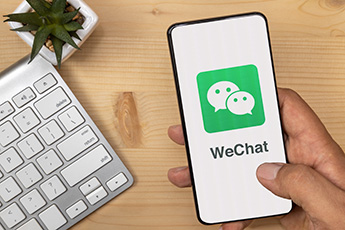Andrew Carnegie spent $9.5B on libraries, education, and peace; MacKenzie Scott has donated $14B to promote equality, democracy, and functional climate change. A long list of American philanthropists — past, present, and future — is behind some very substantial charitable donations.But most charitable donations are smaller than Carnegie’s and Scott’s. In 2021, the average charitable gift size was $813. For all gifts of less than $1K, the median gift size was $20. Those are amounts that in the past have changed hands via cash and check, and the ongoing decline in the use of these instruments has unfortunately reduced the number of small donations, according to Blackbaud, a charitable giving software company. Processing costs also reduce the size of each individual donation. If each donation shrinks by between 2% and 3% — the cost to accept and process a card transaction — then a nonprofit might see just $97 of each $100 donation. A $3 bite might seem trivial, but over many contributions, the missing piece adds up. Some charities ask donors to cover this processing fee; some contributors comply, but many don’t.Donate Now, Pay Later InsteadA familiar option from online retailing, buy now, pay later (BNPL) is also becoming an option for donating to charity. At the beginning of 2023, the BNPL market had about 360MM users — on track to be 900MM users by 2027, for a 157% increase — and was worth $150B. If current growth continues, the BNPL market will likely be worth $3.27T by 2030. About 60% of consumers have tried BNPL, 79MM of them in the US. Just under half, or 46%, are currently making BNPL payments. When donors choose BNPL at checkout, they can determine the overall amount they’d like to give and decide how many installment payments they’d like to make. It’s a lot like making a recurring gift, where a contributor gives $10 (or some other sum) to an organization every month, without a set stop date. BNPL, of course, does have a stop date. It ends when the entire pledge is paid.Those who use BNPL to make purchases appreciate the fact that it gives them more buying power and can help them budget payments over time. Using BNPL to make charitable donations carries the same potential advantages, plus it’s a familiar payment method for millions of people. Nonprofits appreciate the flexibility that BNPL can give donors to make a larger pledge than they might if they needed to donate the funds in a single transaction. But some have expressed concern that the installment payments involved in BNPL could take the place of potentially more valuable recurring gifts.Benefits to Your Institution
For community financial institutions (CFIs), BNPL fits nicely into online bill-pay offerings, which are often the heart of a CFI’s digital interactions with its customers. By reinforcing that connection, BNPL may prove valuable to CFIs as well as to donors and nonprofits.By striking a partnership with popular local charities, your CFI can create a streamlined process for setting up a BNPL donating system within your online or mobile payment platform. Fintechs are also emerging just for the purpose of developing these online donation tools for nonprofits and charities. Depending on the fintech’s capabilities, you may even be able to connect to their system via API, meaning very little tech savvy would be needed to enable a BNPL donation system for your customers. If you choose a cause that your CFI already supports, you can pledge to match donations up to a certain amount as a way of promoting the new capability. Not to mention, the charitable cause can also promote your CFI to make donations easier for their regular donors. While consumers are familiar with BNPL as an online shopping option, many aren’t aware that companies are emerging just for the purpose of processing digital donations in the same manner. Combining your efforts with those of local charities and even third-party providers who make the BNPL donations possible can benefit donors, nonprofits, and CFIs in a variety of ways.
For community financial institutions (CFIs), BNPL fits nicely into online bill-pay offerings, which are often the heart of a CFI’s digital interactions with its customers. By reinforcing that connection, BNPL may prove valuable to CFIs as well as to donors and nonprofits.By striking a partnership with popular local charities, your CFI can create a streamlined process for setting up a BNPL donating system within your online or mobile payment platform. Fintechs are also emerging just for the purpose of developing these online donation tools for nonprofits and charities. Depending on the fintech’s capabilities, you may even be able to connect to their system via API, meaning very little tech savvy would be needed to enable a BNPL donation system for your customers. If you choose a cause that your CFI already supports, you can pledge to match donations up to a certain amount as a way of promoting the new capability. Not to mention, the charitable cause can also promote your CFI to make donations easier for their regular donors. While consumers are familiar with BNPL as an online shopping option, many aren’t aware that companies are emerging just for the purpose of processing digital donations in the same manner. Combining your efforts with those of local charities and even third-party providers who make the BNPL donations possible can benefit donors, nonprofits, and CFIs in a variety of ways.




